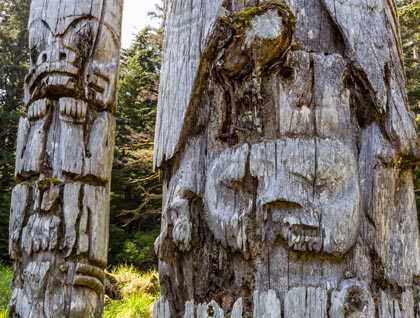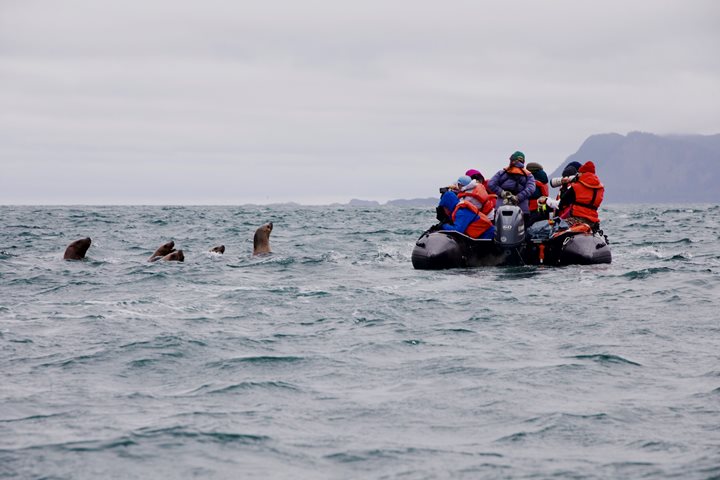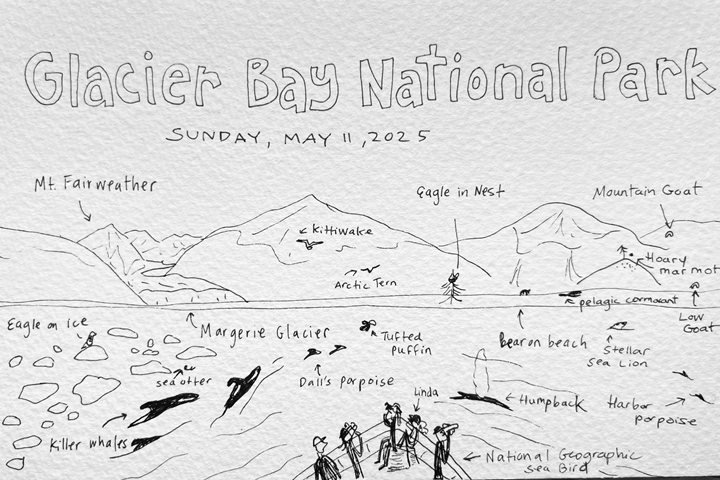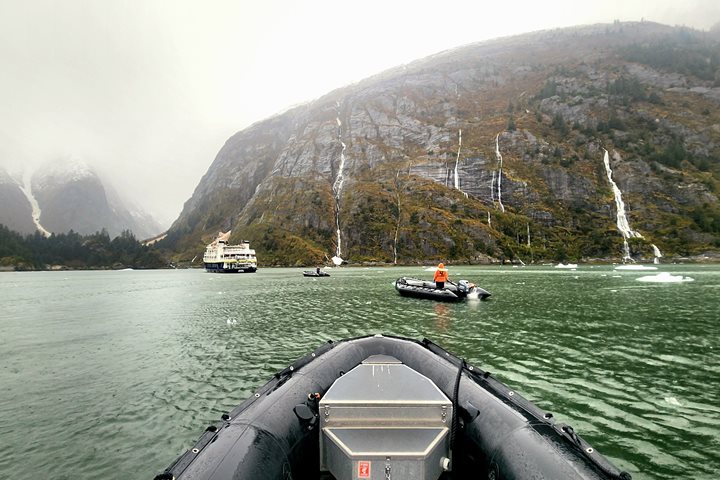SGang Gwaay, formally known as Anthony Island, is one of the southernmost islands in Haida Gwaii. Today we had the luxury of exploring both the natural beauty of this remote island, as well as visit the largest collection of Haida totem poles in situ to be found in Haida Gwaii.
The Haida village at SGang Gwaay has both a mystical and tragic past. This is a UNESCO World Heritage site, and well worthy of the designation. The forest is slowly reclaiming the village site, including the foundations, roof beams, and even the great totem poles themselves. The Haida people have made the conscious decision to allow the decay to continue, rather than to try and preserve and protect the site. The giant totem poles are falling to the ground, or bent over at oblique angles. Nursery plants are growing from the decaying cedar, in some cases splitting beams and posts in the process. The forest will eventually reclaim everything.
The tragic past of this village is tied directly to contact with white people. In the 1780s SGang Gwaay was the location of several episodes of contact with fur traders and explorers like George Dixon, Charles Duncan, Robert Gray, and John Kendrick. In 1862 a smallpox epidemic broke out and decimated the population. Further diseases forced the remaining inhabitants to finally abandon the village in 1865, relocating to Skidegate to the north. The houses and totem poles have been slowly decaying ever since.
In addition to visiting the remains of the village, all on board National Geographic Sea Bird had the opportunity to cruise the rocky shoreline and small islets facing the open Pacific Ocean in our inflatable expedition landing craft. In addition to a myriad of seabirds, these small islets are home to three different species of pinnipeds and we got close up looks at them all.
Harbor seals watched us from protected little bays, hiding amongst the kelp and staring at us with their unblinking wide-eyed curiosity. A large group of several dozen adult male California sea lions have taken over one of the small islets; their barking gave away their identity even before we could see them. On the outermost islets huge rookeries of Steller (northern) sea lions lay hauled out on the rocks, basking in the sun. More growl than bark, this is the largest of the eared seals on the planet. Big males can break 11 feet in length and 2,000 pounds in weight, larger than the largest grizzly or polar bear ever recorded!
Our second full day here in Haida Gwaii was the perfect balance of Haida culture and Mother Nature.







